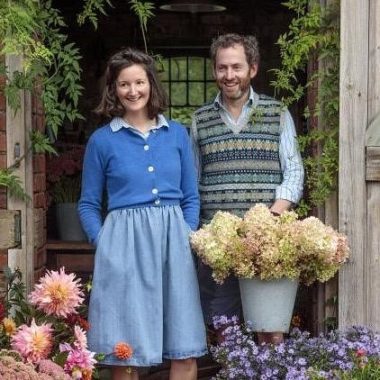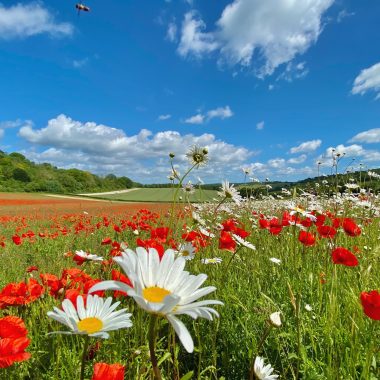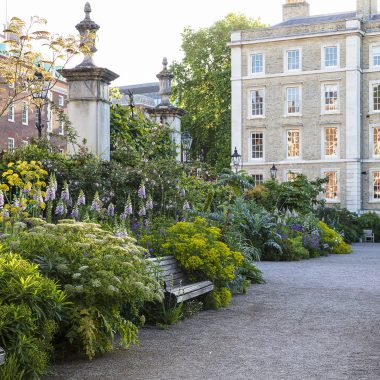Legendary plantsman, Maurice Foster
Over the years, White House Farm, near Sevenoaks, has become a mecca for plantsmen the world over. Home to more than 200 different kinds of magnolia, hundreds of hydrangeas (many of them bred by Maurice), an outstanding collection of climbing roses, a fine arboretum of more than 3000 trees and shrubs, masses of viburnums, over a hundred camellias – the list goes on and on. It is a remarkable place as anyone who has ever visited it can testify.
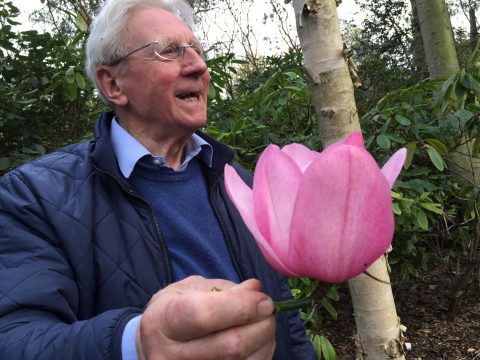
Maurice Foster with a flower of magnolia Premier Cru

The garden at White House Farm, Kent.
Maurice, a sprightly 85-year-old, has a captivating charm, which is coupled with his boundless enthusiasm and knowledge. I defy anyone who is lucky enough to be guided round his garden and arboretum not to lose track of time, so engrossing is the experience. At every turn there is yet another plant or tree to marvel at – here a rhododendron that Maurice found on a plant-seeking expedition in China, there a tree with unusual bark.
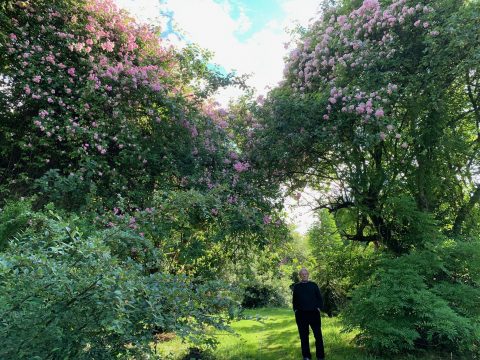
Maurice Foster in his remarkable garden dwarfed beneath some climbing roses.
But it is not a garden brimming with herbaceous borders. ‘I garden in a labour-saving way’ Maurice explains. ‘If you grow the plants together they support each other and make attractive tiers of colour and form without losing their personality.’ He is also keen on underplanting.
Like many gardeners, Maurice first became interested as a young child, encouraged by his grandmother. ‘I had my own little garden and remember aged 7 proudly taking red, white and blackcurrants that I had grown to school.’ He went on to win an exhibition to read modern languages at Pembroke College, Cambridge. His budding interest in gardens grew because Pembroke is 5 minutes from Cambridge Botanic Garden and ‘I spent a lot of time in it (not reading Balzac).’
One long university vac Maurice, who admired the books of Michael Haworth-Booth, owner of a demonstration garden and nursery near Haselmere, wrote to him asking for a job. He worked there for three months, earning £9 .10 shillings a week, the agricultural wage at that date. It was there that he acquired his love for hydrangeas. ‘I owe him a lot. Hydrangeas are a grossly underestimated plant. People simply don’t realise the sheer range.’
Maurice suspects that many people have been put off by the commercially grown hydrangeas forced for the Christmas market. They have a tendency not to live very long which has led to them gaining a reputation as being not very hardy plants. ‘How wrong they are. They are very forgiving plants and tolerant of most soils,’ says Maurice. ‘They are perfect for under-planting trees.’ Not only are the flowers stunning but many have superb autumn colour, both the flowers and the foliage. White House Farm’s plantings demonstrate the scope of hydrangeas, breath-taking in both form and colour from May to October. ‘The main characteristic of the genus is its almost infinite variability in stature, habit, form and colour of flower: not surprising given its extensive geographic range from the Himalayas and Burma, through west, south and central China, to the islands of Taiwan, Sumatra and Java.’ Maurice describes particular examples in Hollywood terms: Hydrangea aspera, for instance, ‘lack the full-figured glamour of hortensia hydrangeas, being more understated, but elegant and timelessly beautiful, more Audrey Hepburn than Dolly Parton.
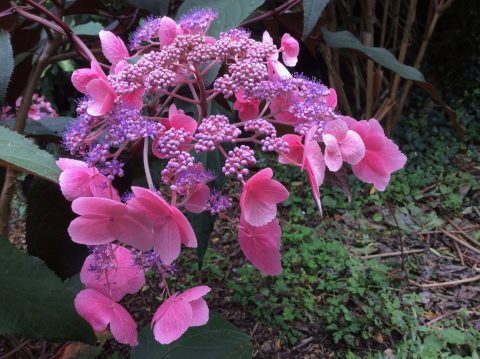
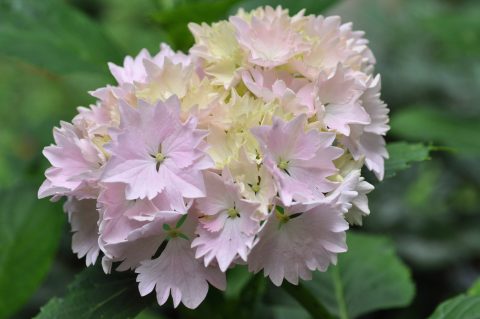
Hydrangea macrophylla ‘Albrechtsburg’
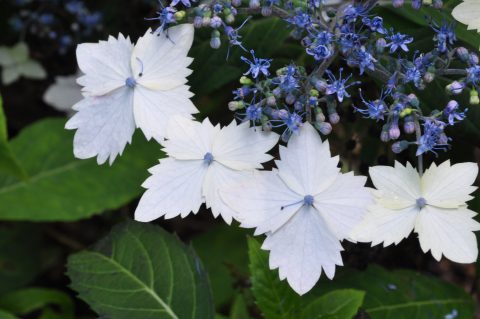
Hydrangea macrophylla ssp stylosa
On leaving Cambridge, Maurice embarked on a long career in publishing. But plants remained an abiding passion in his spare time. He served as a member of the Royal Horticultural Society’s woody plant committee for many years and is now an Honorary member. His involvement with the RHS came about by serendipity. A friend and neighbour, the late David McClintock, was giving a party to celebrate being awarded the VMH. Maurice, (who had just returned from a plant hunting expedition in China) became engrossed in conversation with Robin Herbert, the then President of the RHS. Two days later, Robin wrote to Maurice asking him if he would like to join the Woody Plant Committee. ‘That was twenty-six years ago.’
‘I am a great advocate of the RHS woody plant trials, which culminate in awarding plants an AGM (Award of Garden Merit) – meaning they are excellent garden plants. This is an invaluable way of disseminating specialist knowledge to the wider public, and guiding plant choices.’

The arboretum showing off its wonderful autumn colours.
Unsurprisingly, Maurice has come under pressure to form a trust to ensure that his remarkable collection of plants and trees are conserved, and his knowledge captured and passed on to future plantspeople. Thankfully, a trust has been established so that White House Farm’s marvellous collections can live on as a source of inspiration and erudition for all keen gardeners, and Maurice’s enthusiasm for and encyclopaedic knowledge of all the trees and plants he has lovingly tended at White House Farm continue ad infinitum. ‘I am an old man in a hurry’, as he puts it, describing the planning and documenting underway. His daughter, Clare, a screenwriter and cultural historian at Cambridge, is happily engrossed in the herculean task of cataloguing every single tree and plant.
Groups by appointment.

